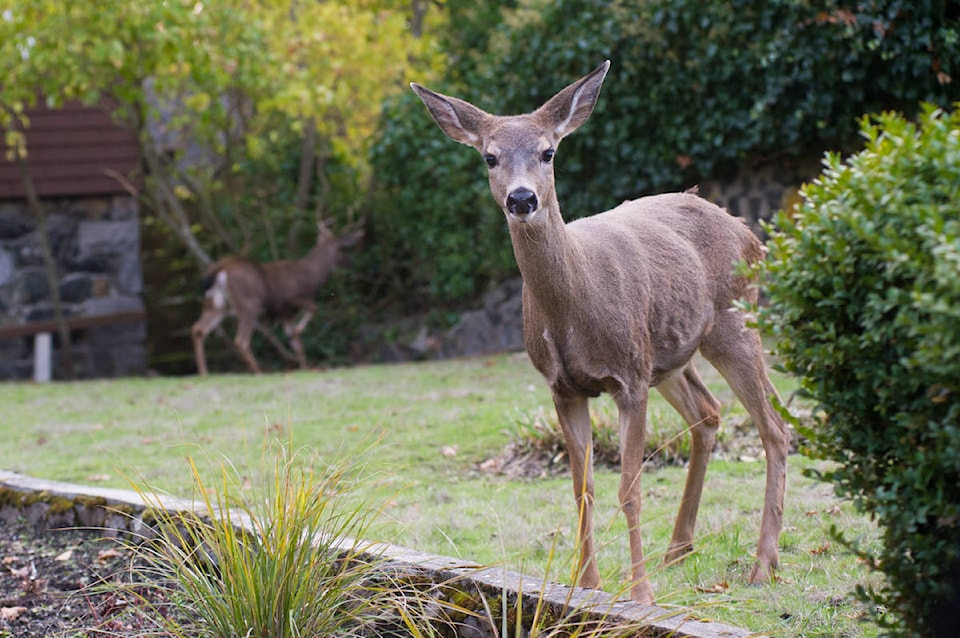The Township of Esquimalt will begin the work of vaccinating does with immunocontraceptives this summer, the next step in the community’s efforts to balance urban wildlife and their interaction with residents.
The initiative follows several years of initial research, exploring local deer numbers. During that time, Oak Bay has also undertaken its own provincially approved immunocontraceptive program, inoculating its female deer in 2019 and 2020, with more boosters planned for this year.
With Esquimalt’s recently concluded survey of deer numbers, the province has provided permits to let that community run its own study, with research being undertaken by the University of Victoria Applied Conservation Macro Ecology Lab, led by Dr. Jason Fisher.
“It’s really exciting to be conducting this research in two municipalities. The research from Esquimalt will build on the research project in Oak Bay,” says Karina Lamy, project manager for Esquimalt.
How the program works
This summer, a wildlife veterinarian, working with field technicians, will tag 20 female control deer in Esquimalt. Then, in September and October, up to 100 female deer will be captured and marked to be vaccinated with an immunocontraceptive.
Those deer will later receive a booster vaccine.
The study will help determine how many deer need to be given contraceptives to manage the urban population and how often they need to receive booster vaccines.
The planned immunocontraceptive program builds on the township’s previous three-year population study, which found an average of 130 to 140 deer in the area each year, not including those at CFB Esquimalt. Before the study, a survey was sent to local households, inviting residents to weigh in about their own experiences and location of deer interactions. Together, these steps helped inform the immunocontraceptive plan.
Fawning season cautions
While Esquimalt takes steps forward in its deer management plan, residents are urged to continue to be mindful of urban deer, especially during the summer fawning season.
Drivers and cyclists are urged to slow down and scan ahead when travelling through neighbourhoods, especially in areas where deer are commonly seen and at times when they tend to be more active – at dusk and dawn, notes Kristy Kilpatrick, of the Urban Wildlife Stewardship Society, which is working with the Township of Esquimalt on deer management, in addition to undertaking the research and contraception program in Oak Bay.
It’s also important to remember that wildlife can act unpredictably when presented with an unknown or unexpected situation, and that young fawns – just like young children – may not recognize the potential threat a vehicle or bicycle can present.
While out in your neighbourhood,keep dogs leashed and under control – does can perceive them as a threat, especially if they have fawns nearby. Similarly, does can act in a protective manner if you near a fawn – even unknowingly. If a doe seems to follow you, try changing direction or crossing the road.
For more tips about living with urban deer, visit uwss.ca. Follow along with Esquimalt’s study at esquimalt.ca
